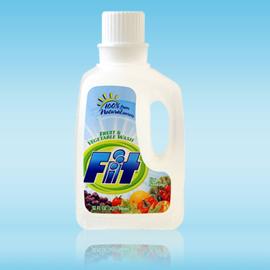Approximately 35% of households in the United States and Canada own 1 or more dogs, totaling an estimated 75 million dogs in the United States and Canada. Despite continuous development of health promotion and disease prevention products and strategies, infectious disease remains an important contributor to disease and death for dogs. Hundreds of pathogens infectious to dogs have been identified, with more emerging over time.3 Some of these pathogens can also cause disease in people, leading to published recommendations to reduce the risks of human disease associated with animal settings.
 Many opportunities for transmission of infectious disease are amplified when dogs are brought together in a shared environment. Settings that involve the temporary congregation of numerous dogs for competition, play, or boarding (often from various geographic locations) are of particular infectious disease concern. Such canine group settings are popular; some of these activities may involve thousands of dogs attending events over several days. Infectious agents introduced into these group settings may lead to disease outbreaks, with the potential for further spread into the communities where the dogs reside, putting many dogs (and potentially humans) at risk.
Many opportunities for transmission of infectious disease are amplified when dogs are brought together in a shared environment. Settings that involve the temporary congregation of numerous dogs for competition, play, or boarding (often from various geographic locations) are of particular infectious disease concern. Such canine group settings are popular; some of these activities may involve thousands of dogs attending events over several days. Infectious agents introduced into these group settings may lead to disease outbreaks, with the potential for further spread into the communities where the dogs reside, putting many dogs (and potentially humans) at risk.
The process of preventing or reducing the transmission of infectious diseases is complex. Disease agents vary in environmental stability, transmission modes, infectivity (ability to spread between hosts), pathogenicity (ability to cause disease), and virulence (ability to cause severe disease). Additionally, a combination of individual-, population-, and environment-level factors influences the development of infectious diseases in dogs. Individual-level factors include age, immune and health status, acquired immunity (previous infection or vaccination), diet, preventive care (eg, ecto- and endoparasite control), and hand hygiene by the people that handle them. Population- or event-level factors include herd immunity, dog density, event cleaning and disinfection practices, and degree of direct and indirect dog-to-dog contact. Environment-level factors include exposure to infectious agents through pathogen-infected vectors (influenced by geography, time of year, and degree of contact with vector-dense locations) or wildlife or their contaminated environment (eg, urine- or feces-contaminated water).
Some factors have individual- and event-level components requiring an integrated approach to risk management. For instance, to reduce indirect pathogen spread, individual efforts, such as the practice of hand hygiene between handling of dogs and use of effective disinfectants, must complement event-level procedures, such as policies and availability of disinfectant and hand hygiene products.
Given the complexity and importance of integrating individual- and event-level efforts, effective disease prevention in canine group settings would be facilitated by evidence-based guidelines that could be widely disseminated and flexibly applied to create disease prevention, risk mitigation, and control programs. In human group settings, disease prevention programs involving standards, recommendations, and regulations are commonly used; similar programs are also being applied in equine group settings. On the other hand, limited standards, guidelines, recommendations, or regulations currently exist regarding infectious disease prevention for canine group settings. For instance, the American Kennel Club has limited rules for addressing infectious disease opportunities during its dog events, and although policies have been developed for many dog parks and privately owned boarding facilities, no standard set of recommendations exists to guide such policies.
Animal shelters house concentrated populations of dogs and have developed resources to guide disease prevention and control programs in their facilities; however, such settings involve a largely unowned population, necessitating somewhat different strategies. The objectives of the literature review reported here were to identify the specific risks of infectious disease transmission among owned dogs in transient group settings in the United States and Canada and use this information to develop prevention and control recommendations.
Risk reduction and management strategies to prevent transmission of infectious disease among dogs at dog shows, sporting events, and other canine group settings
Journal of the American Veterinary Medical Association
September 15, 2016, Vol. 249, No.6
Stull et al
http://avmajournals.avma.org/doi/full/10.2460/javma.249.6.612






 pentastomiasis, gnathostomiasis and sparganosis) by eating the meat of reptiles such as crocodiles, turtles, lizards or snakes (or iguanas, right).
pentastomiasis, gnathostomiasis and sparganosis) by eating the meat of reptiles such as crocodiles, turtles, lizards or snakes (or iguanas, right).  And every time, Chapman or I will walk the person through the limitations with testing, especially in fresh produce.
And every time, Chapman or I will walk the person through the limitations with testing, especially in fresh produce. .jpg) This morning, the
This morning, the .jpg) It has emerged health officials knew about the outbreak among people who visited the farm days before it was closed to the public.
It has emerged health officials knew about the outbreak among people who visited the farm days before it was closed to the public.(1).jpg) Richard, please share with us your knowledge of natural reservoirs of E. coli O157, and the steps you’ve taken to control such dangerous pathogens
Richard, please share with us your knowledge of natural reservoirs of E. coli O157, and the steps you’ve taken to control such dangerous pathogens  On May 17, 2001, Procter & Gamble announced that it was discontinuing its Fit Fruit & Vegetable Wash in the United States, Canada and Mexico effective September 28, 2001. The company said the market was too small for continued investment.
On May 17, 2001, Procter & Gamble announced that it was discontinuing its Fit Fruit & Vegetable Wash in the United States, Canada and Mexico effective September 28, 2001. The company said the market was too small for continued investment..jpg) I thought the response of the audience was sort of appalling.
I thought the response of the audience was sort of appalling..jpg) I would like to remind FSIS that it ain’t so easy to handle contaminated ground beef and not spread it around a home or food service kitchen.
I would like to remind FSIS that it ain’t so easy to handle contaminated ground beef and not spread it around a home or food service kitchen.